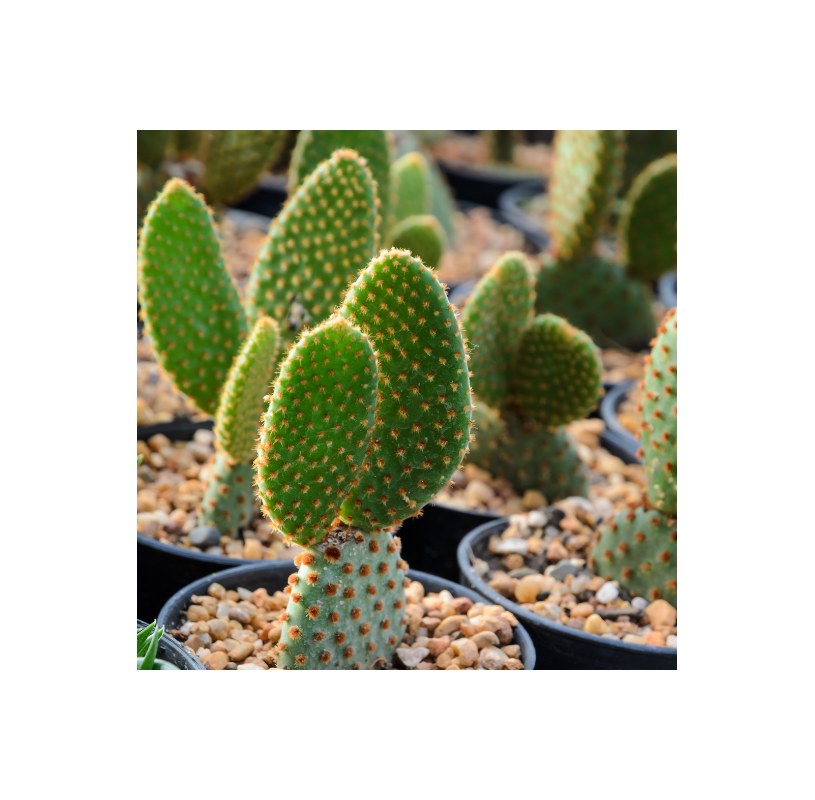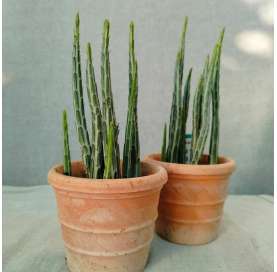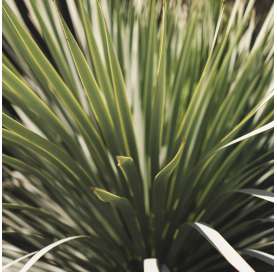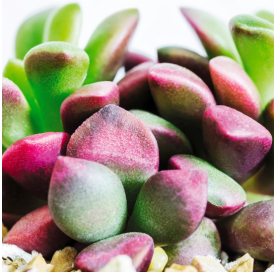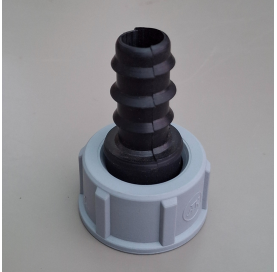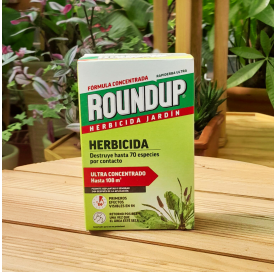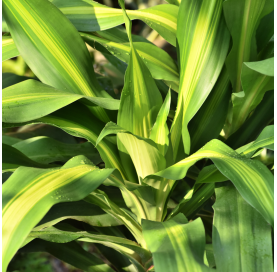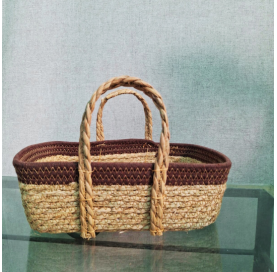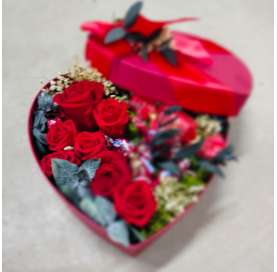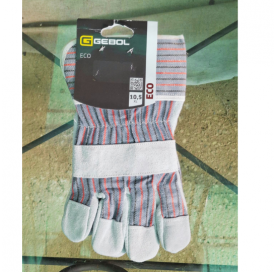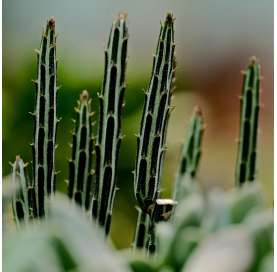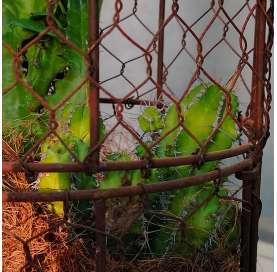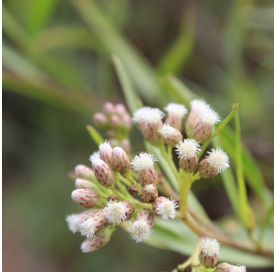Puntia microdasys
The Opuntia microdasys, also called the "bunny ears cactus," is a succulent from Mexico, admired for its aesthetic appeal and low-maintenance nature. Its flat segments are covered in small glochids that require careful handling. It needs direct sunlight, moderate watering, and well-drained soil. While it rarely blooms indoors, it can display small yellow flowers outdoors. This cactus is perfect for beginners.
 Encrypted payments for greater security
Encrypted payments for greater security
To reduce the plant's time in transit, shipments are made from Monday to Wednesday.


Shipping only to mainland Spain and mainland Portugal
The Opuntia microdasys, also known as the "bunny ears cactus" or "angel wings," is a succulent plant from the cactus family, notable for its unique paddle-like segments covered in small, clustered spines called glochids. Here’s a detailed overview:
Description
Opuntia microdasys is a compact plant with flattened, segmented pads resembling bunny ears. These segments are covered in clusters of glochids, small barbed spines that vary in color—yellow, white, or brown, depending on the variety. Unlike other cacti, it lacks long spines, giving it a softer appearance, although the glochids can be sharp and difficult to remove from the skin.
Origin and History
This cactus originates from the arid and semi-arid regions of Mexico, particularly in the states of Coahuila and Zacatecas. In its natural habitat, it plays a vital ecological role, providing food and shelter to various desert species. It has become a popular ornamental plant worldwide due to its adaptability and is commonly grown in warm outdoor gardens or as an indoor plant in many parts of the world.
Care
The Opuntia microdasys is a low-maintenance plant, making it ideal for those looking for an easy-care succulent.
- Location: It requires direct sunlight and can thrive outdoors in warm climates or indoors near a well-lit window. In colder climates, it should be protected from extreme cold and frost.
- Soil: It needs well-draining soil, such as a mix of sand and cactus soil, to prevent root rot.
- Temperature: It tolerates high temperatures and can withstand up to 40°C (104°F), but in winter, it prefers temperatures between 5°C and 10°C (41°F–50°F).
Watering
Opuntia microdasys is sensitive to overwatering, so moderate watering is essential. In spring and summer, water approximately every two weeks, ensuring the soil is dry before watering again. In autumn and winter, reduce watering to once a month or less, as the plant enters a period of dormancy.
Pruning
This cactus does not require regular pruning. However, if a segment or "ear" is damaged, it can be trimmed with a sanitized tool. These segments can also be used to propagate the plant by letting them dry before planting.
Fun Facts
- Opuntia microdasys is popular for its decorative appeal, but its glochids can be irritating to the touch, so it’s best handled with care or gloves.
- In its native habitat, animals such as desert tortoises feed on its segments, taking advantage of the water content during dry periods.
- Though it rarely blooms indoors, it can produce small yellow flowers outdoors, especially in warm and well-lit conditions.
Opuntia microdasys is an excellent choice for beginners, as it combines aesthetic appeal with resilience, making it an easy-to-maintain plant.
Data sheet
- Name
- Puntia microdasys
- Origen
- México
- Height
- Can grow up to 60 cm in height and spread about 90 cm in width.
- Colour
- Light green stems covered with small clusters of glochids (tiny spines) in yellow, white, or brown
- Flowering
- Spring and Summer
- Location
- Prefers direct sunlight and thrives outdoors in sunny spots.
- Irrigation
- Highly drought-tolerant.
- Applications
- Popular as an ornamental plant in cactus and succulent gardens, as well as in pots for both indoor and outdoor decoration. In its natural habitat, it provides food and shelter for desert wildlife.
- Note
- The glochids are tiny, fine spines that can irritate the skin, so it’s best handled with gloves. It’s a low-maintenance plant, ideal for beginners.
12 other products in the same category:
-
-
Yucca gloriosa variegata€19.00
-
Anacampseros Rufescens€3.50
-
-
Roundup 250 ml Herbicida ECO€17.00
-
Dracaena indivisa€16.00
-
-
Caja corazon con rosa€21.00
-
Guantes Eco€4.00
-
Kleinia stapeliiformis€3.50
-
Jaula vieja con cactus€22.00
-
Baccharis€17.00
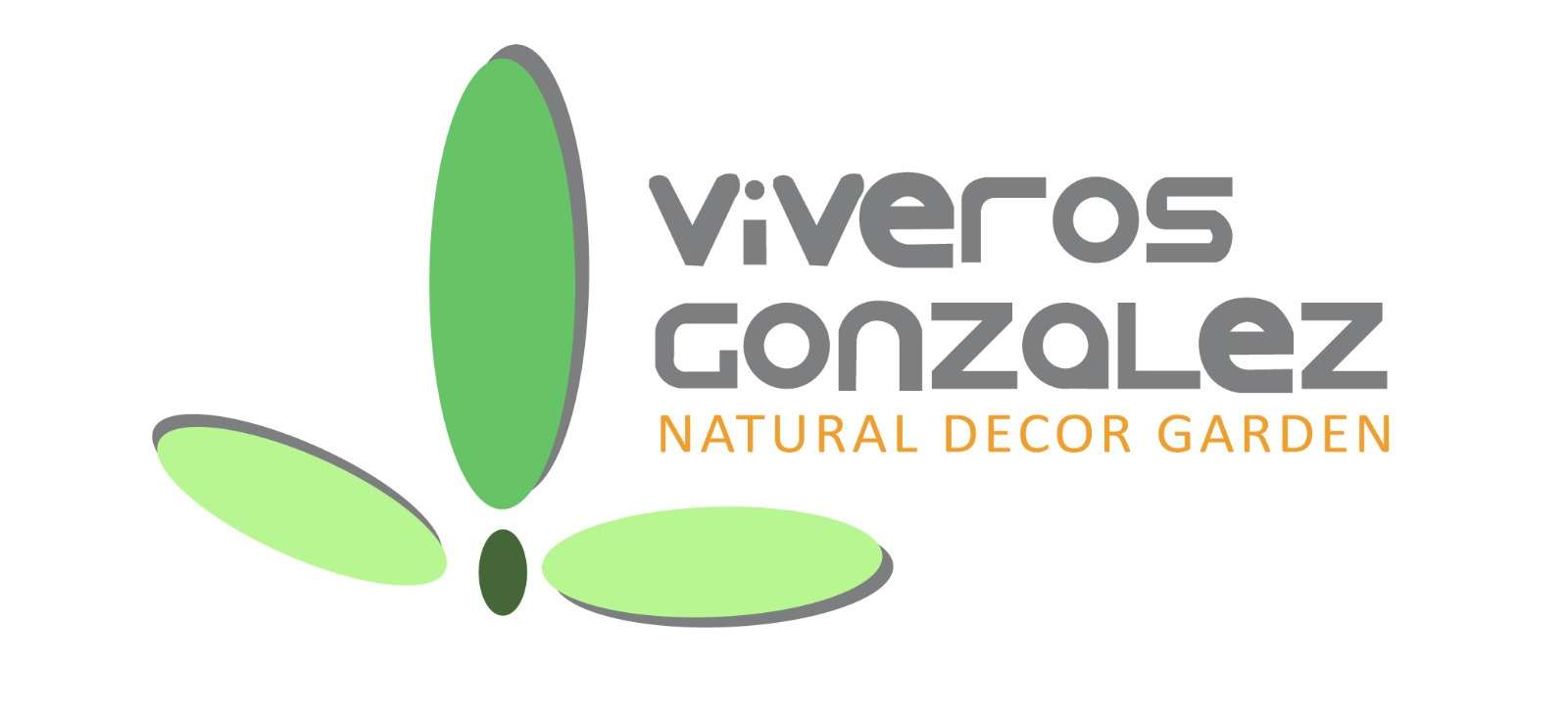
 English
English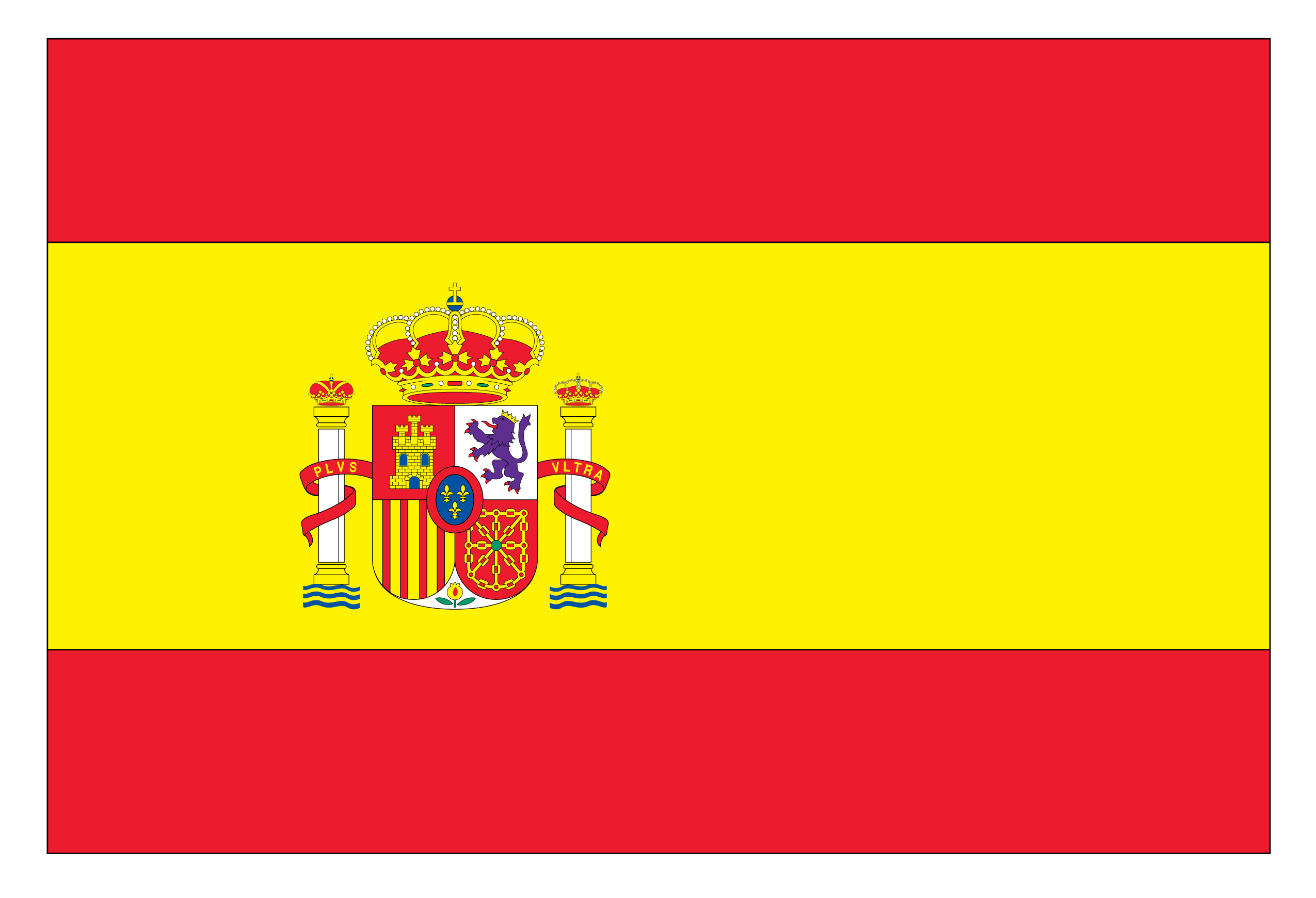 Spanish
Spanish